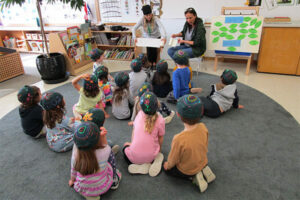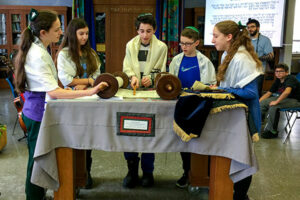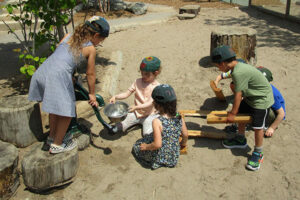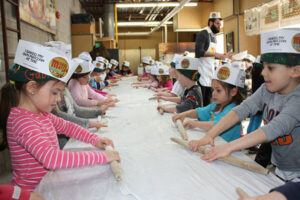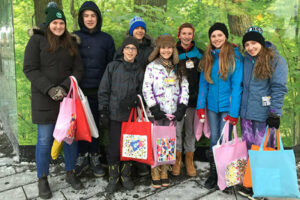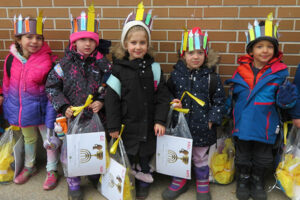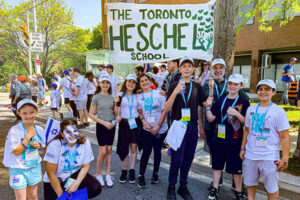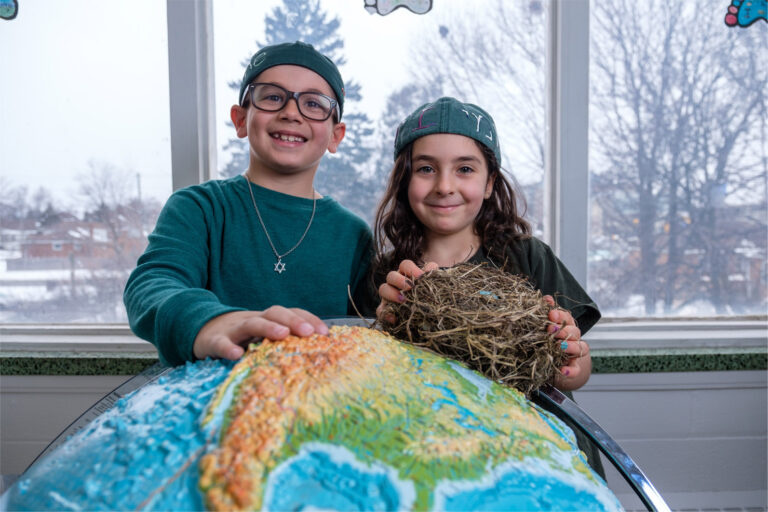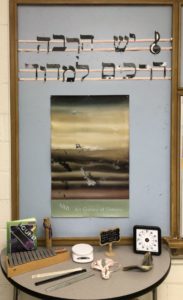
Topics of study at The Toronto Heschel School, whether within a single discipline or interdisciplinary, are organized around “big ideas” that guide our learning, which we call Generative Topics. A Generative Topic is a broad over-arching integrative concept or theme, often relevant to more than one discipline, which aims to generate student interest and raise important questions. By learning through Generative Topics, students appreciate how concepts in different subjects are elevated through their relationship to other subjects and to big ideas in the world and in their lives. Learning through Generative Topics challenges students to make connections, think critically, and build creative interpretations of what they are learning.
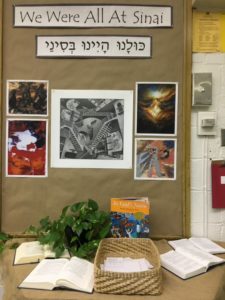 Ideally, Generative Topics will be based on a rich Judaic concept. Examples of Generative Topics in The Toronto Heschel School curriculum are Every Journey Teaches Us Something About the World and Something About Ourselves | כָּל מַסָּע מְלַמֵּד אוֹתִי עָּלַי וְעַל הַסוֹבֵּב אוֹתִי (SK); There Are Many Ways to Measure | יש הרבה דרכים ל מדוד (Gr 4); and Each Person is Unique and Necessary for Tikkun Olam | כל אחד ואחת הם מיוחדים, ולכן כל אחת ואחד נדרשים לתיקון עולם (Gr 8). As a Jewish school inspired by a spiritual and ethical tradition, we express our learning through the framework of values. Therefore, our Generative Topics express a “value” statement or a “thesis,” rather than merely a description or a statement of a topic. Certain phrases make good topics or titles but are not Generative Topics. For example, “Stories have a crisis, a climax, and a denouement” is a title, but “Stories teach us about ourselves” or “Stories create new possibilities” include theses which attempt to answer a “why” question. “There is a lot of diversity among people” is a fact, while “Human diversity teaches us to appreciate one another” is a Generative Topic.
Ideally, Generative Topics will be based on a rich Judaic concept. Examples of Generative Topics in The Toronto Heschel School curriculum are Every Journey Teaches Us Something About the World and Something About Ourselves | כָּל מַסָּע מְלַמֵּד אוֹתִי עָּלַי וְעַל הַסוֹבֵּב אוֹתִי (SK); There Are Many Ways to Measure | יש הרבה דרכים ל מדוד (Gr 4); and Each Person is Unique and Necessary for Tikkun Olam | כל אחד ואחת הם מיוחדים, ולכן כל אחת ואחד נדרשים לתיקון עולם (Gr 8). As a Jewish school inspired by a spiritual and ethical tradition, we express our learning through the framework of values. Therefore, our Generative Topics express a “value” statement or a “thesis,” rather than merely a description or a statement of a topic. Certain phrases make good topics or titles but are not Generative Topics. For example, “Stories have a crisis, a climax, and a denouement” is a title, but “Stories teach us about ourselves” or “Stories create new possibilities” include theses which attempt to answer a “why” question. “There is a lot of diversity among people” is a fact, while “Human diversity teaches us to appreciate one another” is a Generative Topic.
Each Generative Topic is introduced with a title based on a Hebrew phrase, typically drawn from a traditional Jewish source, and is described by a phrase that clearly articulates the “value” or thesis statement. Generative Topics are posted in the classroom with their title and citation, images or artefacts that epitomize the Generative Topic, and sometimes an inspirational quote in English or Hebrew.
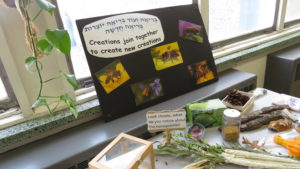
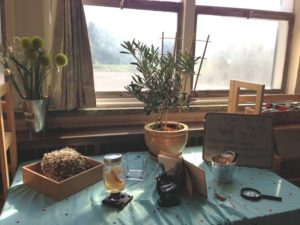
To get a deeper understanding of how a Generative Topic works, let’s look at the Grade 1 curriculum. The first of four Generative Topics that span the school year is Creations Join Together to Create New Creations | בריאה ועוד בריאה יוצרות בריאה חדשה, which focuses on each creation being dependent on the previous day’s creation, and that for a creation to exist it is a compilation of creations coming together to create this new creation.
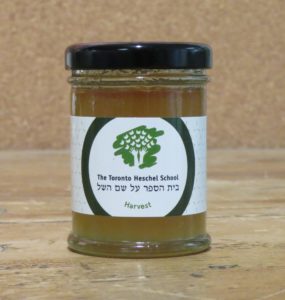 We chose honey as our symbol for this unit because it requires the interaction of many different components and creations coming together, for example: light from Day 1; water from Day 2; flowers and trees from Day 3; sun from Day 4; bees from Day 5; and people harvesting the honey from Day 6. Just like the symbols that come together to help celebrate the holidays, children, and teachers, each an individual creation, come together to form the Grade 1 community, a new creation where each member is responsible for bringing their strengths and uniqueness for the community to flourish.
We chose honey as our symbol for this unit because it requires the interaction of many different components and creations coming together, for example: light from Day 1; water from Day 2; flowers and trees from Day 3; sun from Day 4; bees from Day 5; and people harvesting the honey from Day 6. Just like the symbols that come together to help celebrate the holidays, children, and teachers, each an individual creation, come together to form the Grade 1 community, a new creation where each member is responsible for bringing their strengths and uniqueness for the community to flourish.
As the children learn in Chumash about the creation of the first human while studying the seven days of creation, simultaneously, in Social and Environmental Studies, they will experiment with how different processes of the human body—respiratory, circulatory, and nervous system—come together to keep our bodies alive and healthy. Students also learn about the life cycle of a honeybee and how honey is produced, and they visit Heschel’s pollinator garden.
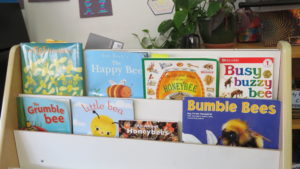 The Generative Topic also manifests itself in literacy and math. In English and in Hebrew, the students learn that each letter is a creation, which comes together with other letters to create words, then sentences. Words together in a sentence create meaning—a new creation. In math, students learn that individual units come together to make patterns, which can be represented in movements, sounds, pictures, and objects.
The Generative Topic also manifests itself in literacy and math. In English and in Hebrew, the students learn that each letter is a creation, which comes together with other letters to create words, then sentences. Words together in a sentence create meaning—a new creation. In math, students learn that individual units come together to make patterns, which can be represented in movements, sounds, pictures, and objects.
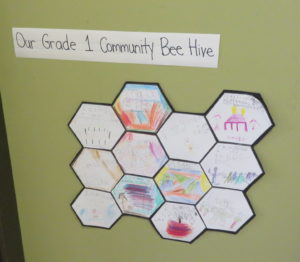 The Generative Topic remains an organizing principle in the arts. Children learn how beats make a bar and multiple bars make a phrase, which put together become a song. The students will explore a musical soundscape to a poem about creation, and each child will express a day of creation through musical interpretation and dramatized movement. In Visual Arts, the students collaborate on the creation of a “Beehive Community,” where each artist draws and colours elements of the beehive and bee world. These images are cut out and placed on a mural. The artists then learn how to fold and craft kirigami octagons to represent the hive’s octagonal cells, which are also added to the mural. To see further how this Generative Topic manifests itself in art, check out the Heschel Gallery.
The Generative Topic remains an organizing principle in the arts. Children learn how beats make a bar and multiple bars make a phrase, which put together become a song. The students will explore a musical soundscape to a poem about creation, and each child will express a day of creation through musical interpretation and dramatized movement. In Visual Arts, the students collaborate on the creation of a “Beehive Community,” where each artist draws and colours elements of the beehive and bee world. These images are cut out and placed on a mural. The artists then learn how to fold and craft kirigami octagons to represent the hive’s octagonal cells, which are also added to the mural. To see further how this Generative Topic manifests itself in art, check out the Heschel Gallery.
For an exploration of a different Generative Topic, you can read about the Grade 5’s Living Haggadah. If you would like to learn more about Generative Topics in your child’s grade, our Curriculum Night overviews describe interdisciplinary units within the Generative Topic framework.

